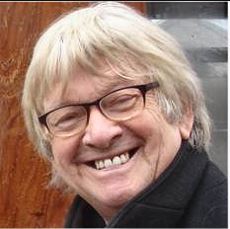I was in Sarajevo for my last meeting as a member of the EFJ steering committee (board) and the Federation’s general meeting held between 24 – 27 April. Having served three three yearly terms over the past 12 years, I was longer eligible to stand for the steering committee.
Sarajevo is best known for three events. The first is the assassination of the Archduke Franz Ferdinand, heir to the Austro-Hungarian throne and his wife on 28th June 1914, which led to the outbreak of the First World War. The second is that it was the venue for the winter Olympic Games in 1984. The third and more recent is the siege of the city for 1,425 days between 5 April 1992 and 29 February 1996, during the civil war in the former republic of Yugoslavia. Sarajevo, the capital of Bosnia and Herzegovina, was encircled by the army of Republika Srpska and by the time the siege was raised a total of 13,952 people had been killed including 5,434 civilians. It had lasted a year longer than the siege of Leningrad. A year later a report by the Council of Europe’s Committee on Culture and Education commented:
“It is plain that Sarajevo has suffered badly at the hands of its attackers. Apart from the obvious human cost in the continued suffering and difficulties of day to day living, there has been serious damage to the urban fabric. The infrastructure (drainage, electricity, telephone services, etc.) is badly damaged. Most buildings are damaged significantly and probably all buildings are damaged to a greater or lesser degree (broken glass etc.). Some buildings have been completely destroyed including ancient monuments (such as the Library) and including a number of modern steel framed buildings (such as the Unis Building) which in some cases have simply collapsed. 35,000 dwellings are also assessed to have been destroyed during the past year.”
There is still much evidence of war damage. The journey from the airport to the city centre passes many damaged buildings, including a retirement home for older people wrecked by shelling. During the siege this route was known as ‘snipers alley’ for obvious reasons. A walk around the city centre shows that many buildings still bear the scars of aerial bombing, shelling and bullets. An evening visit to the Sarajevo Tunnel Museum organised for delegates and guests, showed the real hardship and misery suffered by the people. The tunnel was built by the Bosnian army under the city airport in the spring of 1993 and took three months to complete. It linked the city with Bosnian held territory on the opposite side of the airport, (the airport was held by the UN) and was used to bring in supplies, food (administered via the black market) ‘and arms, as well as take people out of the city. It seems that the UN knew all about the tunnel under the runway, but left it alone. The besiegers also knew of its existence, and despite attempts, they failed to destroy it.
On arrival at the conference hotel we learnt that one of our guests, Palestinian journalist Omar Nazzal had been arrested on his way to Sarajevo. Omar, a member of the General Secretariat of the Palestinian Journalists’ Syndicate (PJS) in the Israeli occupied West Bank, was arrested by Israeli forces on the al-Karameh (Allenby) crossing between Palestine and Jordan on Saturday, 23 April. Statements condemning the arrest were quickly put out by the IFJ and EFJ together with demands for his immediate release, which were ignored by the Isreali authorities. At the time of writing he is still in custody. Details on the EFJ web site at: http://europeanjournalists.org/blog/2016/04/23/palestinian-journalist-omar-nazzal-arrested-on-his-way-to-the-efj-general-meeting/ and the IFJ web site at: http://www.ifj.org/nc/news-single-view/browse/weiter/backpid/51/article/a-palestinian-journalist-arrested-near-jerusalem/
The General Meeting is held every three years. It is the EFJ’s governing body, setting policy and the general direction of the Federation. It also elects the president, vice president and members of the steering committee for a three year term. It comprises elected by delegates from member union and associations of the EFJ and this year there were 93 deleagtes from affiliated organisations plus 42 guests.
There were lively debates on a number of motions and statements, including what our response should be to the EU’s new trade secrets directive (see previous blog ‘EU threatens investigative journalism’ dated 22 April); promoting and protecting public service broadcasting; attacks on press freedom in Turkey and campaigning against hate speech and corruption. Details of all resolutions and statements can be found on the EFJ web site at: http://europeanjournalists.org/
The event was hosted by the Bosnia-Herzegovina Journalists Association (BHN) whose organising work was appreciated by all delegates and guests.
It was also my last meeting and I very much appreciated the kind words and gifts I received on my retirement from the steering committee. I will never forget what I have learnt and seen during my nine years. Now it is up to the new steering committee ably supported by EFJ and IFJ staff to continue to build the European federation, strengthen ties with our affiliated organisations and together through the IFJ strengthen our trade union organisations against the global attacks on journalism and our rights to organise to defend was of the most basic human rights, the right to report and inform.
